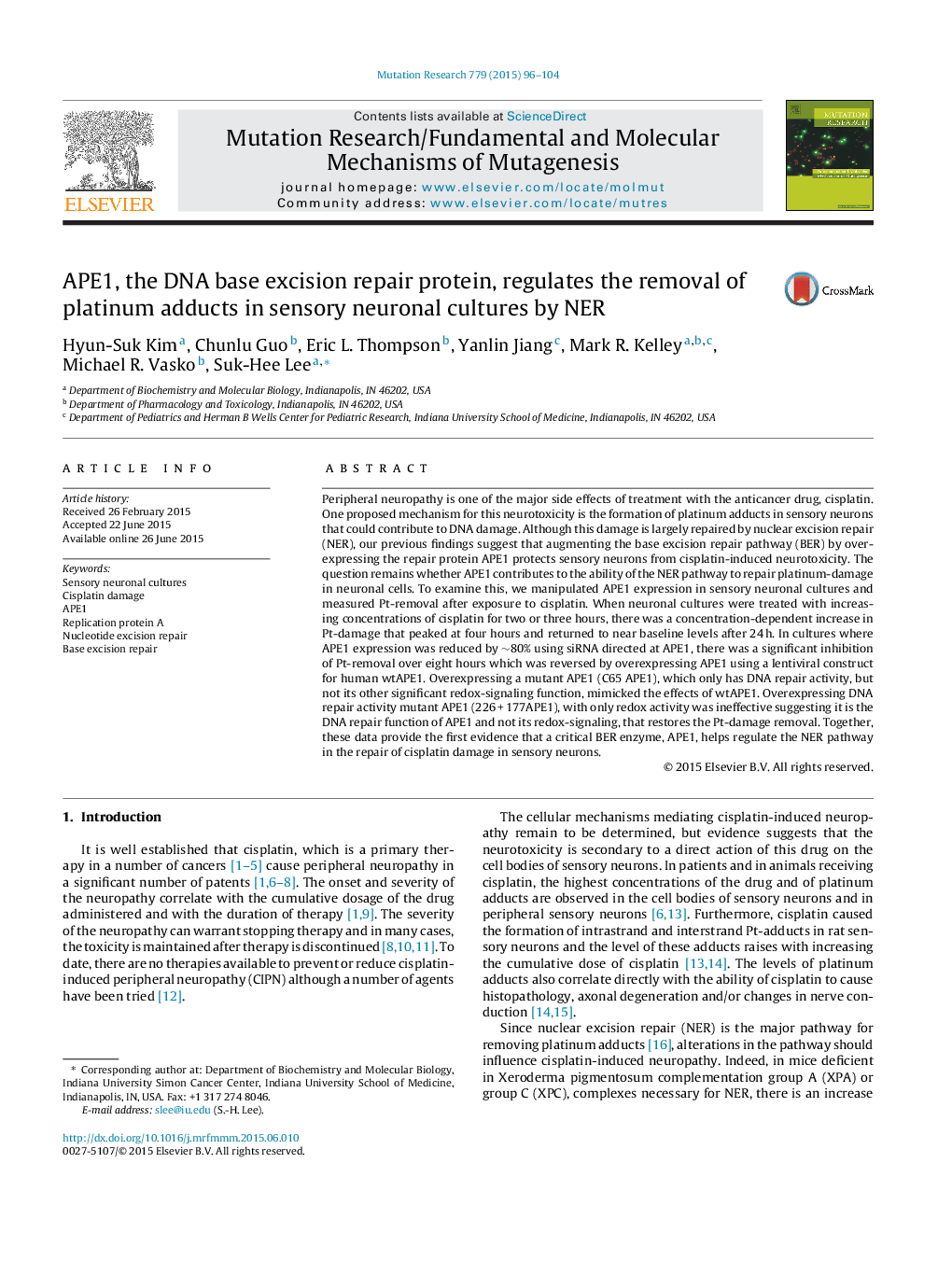| کد مقاله | کد نشریه | سال انتشار | مقاله انگلیسی | نسخه تمام متن |
|---|---|---|---|---|
| 8455697 | 1548320 | 2015 | 9 صفحه PDF | دانلود رایگان |
عنوان انگلیسی مقاله ISI
APE1, the DNA base excision repair protein, regulates the removal of platinum adducts in sensory neuronal cultures by NER
دانلود مقاله + سفارش ترجمه
دانلود مقاله ISI انگلیسی
رایگان برای ایرانیان
کلمات کلیدی
موضوعات مرتبط
علوم زیستی و بیوفناوری
بیوشیمی، ژنتیک و زیست شناسی مولکولی
تحقیقات سرطان
پیش نمایش صفحه اول مقاله

چکیده انگلیسی
Peripheral neuropathy is one of the major side effects of treatment with the anticancer drug, cisplatin. One proposed mechanism for this neurotoxicity is the formation of platinum adducts in sensory neurons that could contribute to DNA damage. Although this damage is largely repaired by nuclear excision repair (NER), our previous findings suggest that augmenting the base excision repair pathway (BER) by overexpressing the repair protein APE1 protects sensory neurons from cisplatin-induced neurotoxicity. The question remains whether APE1 contributes to the ability of the NER pathway to repair platinum-damage in neuronal cells. To examine this, we manipulated APE1 expression in sensory neuronal cultures and measured Pt-removal after exposure to cisplatin. When neuronal cultures were treated with increasing concentrations of cisplatin for two or three hours, there was a concentration-dependent increase in Pt-damage that peaked at four hours and returned to near baseline levels after 24Â h. In cultures where APE1 expression was reduced by â¼80% using siRNA directed at APE1, there was a significant inhibition of Pt-removal over eight hours which was reversed by overexpressing APE1 using a lentiviral construct for human wtAPE1. Overexpressing a mutant APE1 (C65 APE1), which only has DNA repair activity, but not its other significant redox-signaling function, mimicked the effects of wtAPE1. Overexpressing DNA repair activity mutant APE1 (226Â +Â 177APE1), with only redox activity was ineffective suggesting it is the DNA repair function of APE1 and not its redox-signaling, that restores the Pt-damage removal. Together, these data provide the first evidence that a critical BER enzyme, APE1, helps regulate the NER pathway in the repair of cisplatin damage in sensory neurons.
ناشر
Database: Elsevier - ScienceDirect (ساینس دایرکت)
Journal: Mutation Research/Fundamental and Molecular Mechanisms of Mutagenesis - Volume 779, September 2015, Pages 96-104
Journal: Mutation Research/Fundamental and Molecular Mechanisms of Mutagenesis - Volume 779, September 2015, Pages 96-104
نویسندگان
Hyun-Suk Kim, Chunlu Guo, Eric L. Thompson, Yanlin Jiang, Mark R. Kelley, Michael R. Vasko, Suk-Hee Lee,